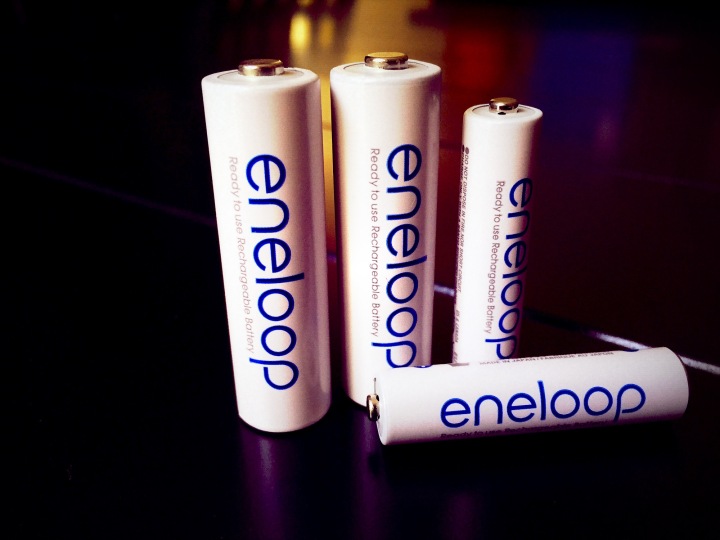Secret little money savers.
We knew having kids would be expensive, but one expense we didn’t account for was keeping batteries in dozens of electronic toys. Every birthday and each Christmas brings with it a new family of chirping plastic that consumes power like chips at a Mexican restaurant.
This predicament led us to search for a different solution. We tried just letting everything go dead, but silent toys are apparently unacceptable to a 4-year-old’s sense of well being (“why… isn’t… Dora… TALKINGGGG!!!”).
Resigning to the reality of “light-up” everything, I searched around for some rechargeable batteries. That’s when I discovered Panasonic’s fantastic line of Eneloop rechargeable batteries.
What Does it Claim to Do?
Eneloops are rechargeable batteries that come in all of the standard sizes. Unlike the rechargeables you remember from childhood, Eneloops are Nickel-Metal Hydride cells that hold their charge and can be reused more than 1500 times. It’s similar to the battery technology that’s popped up in laptops and smart phones over the years. Better yet, they don’t have a memory and they’re rated to hold a charge for years.
Specs:
- AA, AAA, C (w/spacer), and D (w/spacer)
- Up to 2100 cycles
- Self-discharge of only 30% after 5 years
- 2000 mAh typical capacity
So, do they live up to the promise?
Look and Feel
They’re batteries. They do look fancy in their standard white wrapper, and I’ve seen them floating around in a variety of colors. If you’re passionate about a glamorous battery compartment, these are the ones you want.
Performance and User Experience
I’ve used these for a few years now, and can’t find anything bad to say about them. They last longer than standard alkalines, charge in a few hours, and perform like new every time.
An interesting observation: By using Eneloops in toys, flashlights, and gadgets, I no longer have anxiety about rationing power. It’s reassuring to know that full power is only a quick recharge away.
Note: Some sets come with a free charger, but I would recommend the LaCrosse BC-700 to keep them in tip top shape.
Integration with Other Platforms
These work in absolutely everything I can find, and better than their alkaline cousins.
Build Quality and Durability
Panasonic claims hundreds, or even thousands of recharge cycles, and those claims seem to be spot on. I have yet to have one go bad on me.
Affordability
A 20-pack of name brand AA alkalines runs about $12, which is $0.60/ea. A 16-pack of AA Eneloops runs about $42, which is $2.60/ea.
Let’s be conservative and say that Eneloops only last 1/3 of the uses they’re rated for, at 500 recharge cycles. 500 single uses of an AA alkaline would cost you $300. 500 single uses of an AA Eneloop would cost you $2.60 (plus the cost of energy to recharge)!
When you factor in all of the smart locks, cameras, and other gear in your smart home, I think you’ll agree that these things can save you a fortune.
Go stock up today.

















These things are awesome little gems. Even without kids they are a no brainier investment.
I’m gonna buy a pack right now. I’ve been looking for good rechargeable AA’s for my mouse & trackpad, speaker, and other random devices that keep burning through batteries. Thanks!
Hello,I read your blog named “REVIEW: Eneloop Rechargeable Batteries – At Home in the Future” on a regular basis.Your humoristic style is awesome, keep up the good work! And you can look our website about proxy server list.